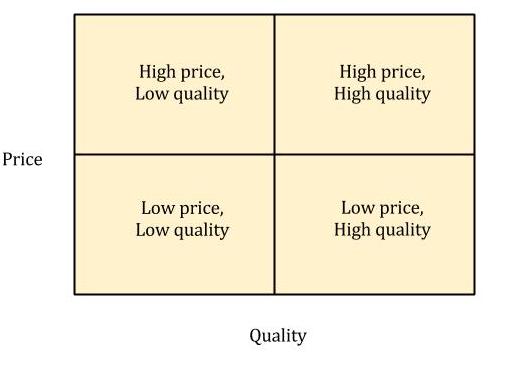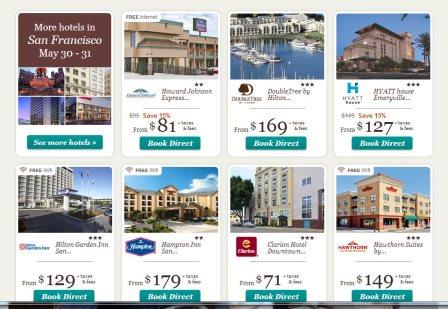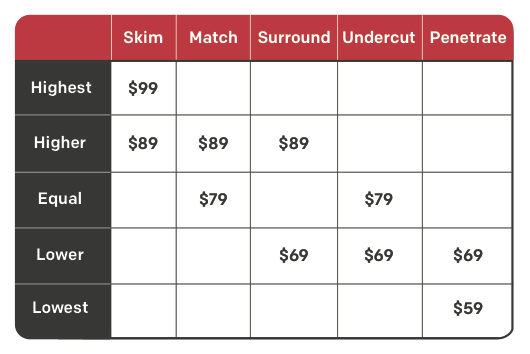How to Write Market Positioning Statements
Your organization is gearing up to launch a new product or service, or enter a new market. You’re on the marketing team. You’re familiar with the details of these new endeavors; you know your customers. Where do you start? (The following guide is an excerpt from my Marketing Strategy certificate.)
Start with the positioning statement.
A positioning statement is a concise description of your target market as well as a compelling picture of how you want that market to perceive your brand. Though it may read like something from your promotional materials, your positioning statement is an internal tool. Every product and marketing decision you make regarding your brand has to align with and support your positioning statement. A good positioning statement is a guidepost for your marketing efforts. It helps you maintain focus on your brand and its value proposition while you work on market strategy and tactics.
Guidelines for Good Positioning Statements
What makes a good positioning statement? Here are six keys to keep in mind:
- It is simple, memorable, and tailored to the target market.
- It provides an unmistakable and easily understood picture of your brand that differentiates it from your competitors.
- It is credible, and your brand can deliver on its promise.
- Your brand can be the sole occupier of this particular position in the market. You can “own” it.
- It helps you evaluate whether or not marketing decisions are consistent with and supportive of your brand.
- It leaves room for growth.
Template for Writing a Positioning Statement
Here’s a basic template for writing a positioning statement:
For [insert Target Market], the [insert Brand] is the [insert Point of Differentiation] among all [insert Frame of Reference] because [insert Reason to Believe].
- The point of differentiation (POD) describes how your brand or product benefits customers in ways that set you apart from your competitors.
- The frame of reference (FOR) is the segment or category in which your company competes.
- The reason to believe is just what it says. This is a statement providing compelling evidence and reasons why customers in your target market can have confidence in your differentiation claims.
The wording of your positioning statement doesn’t have to match this template exactly, but to be effective, it must contain the five main components in brackets above. Occasionally, a positioning statement will contain a point of parity, when it is central to a product’s positioning.
Above all, your point of differentiation, frame of reference, and reason to believe must be meaningful, important, and convincing to your customers, not just to your company.
Examples of Great Positioning Statements
The following positioning statement was used by Amazon.com in 2001, when it sold books almost exclusively:
For World Wide Web users who enjoy books, Amazon.com is a retail bookseller that provides instant access to over 1.1 million books. Unlike traditional book retailers, Amazon.com provides a combination of extraordinary convenience, low prices, and comprehensive selection.
Our fictitious company, Underfoot Industries, has decided to pursue two target markets: schools and light commercial customers. These are distinct market segments whose customers rate their needs differently, so the company must develop two positioning statements:
For schools, the Underfoot Industries EverAwesome line is the strongest, most durable carpet among all commercial-grade carpets for organizations on a budget, because it is made using our patented SteelTwist technology. The EverAwesome line features Underfoot Industries’ patented technology for producing high-strength, low-wear carpets. Underfoot named its production technology “SteelTwist” to appeal to customers, such as schools, who place a very high value on carpet strength.
For today’s appearance-conscious business, the Underfoot Industries EverAwesome line is the carpet that stays new-looking longest among all commercial-grade carpets. Our patented technology produces durable, low-wear carpet whose lifetime cost is 40-80% lower than other brands. The brand name “EverAwesome” tells customers: “This carpet looks great, AND it will last a long time.”
If this guide to market positioning statements has helped you guide your marketing strategy, I highly recommend you learn more about the Marketing Strategy certificate I teach through eCornell. It covers communicating the value of your brand in more detail as well as marketing research and analysis, distribution strategy, decision-making, and new media marketing.
Update: Thanks to the immense popularity of this post and all the great feedback we have received, we created a free Market Positioning Statement generator. Simply plug in a few pieces of information, hit submit and get your statement in 30 seconds! It’s time to take your business to the next level- check it out here.




